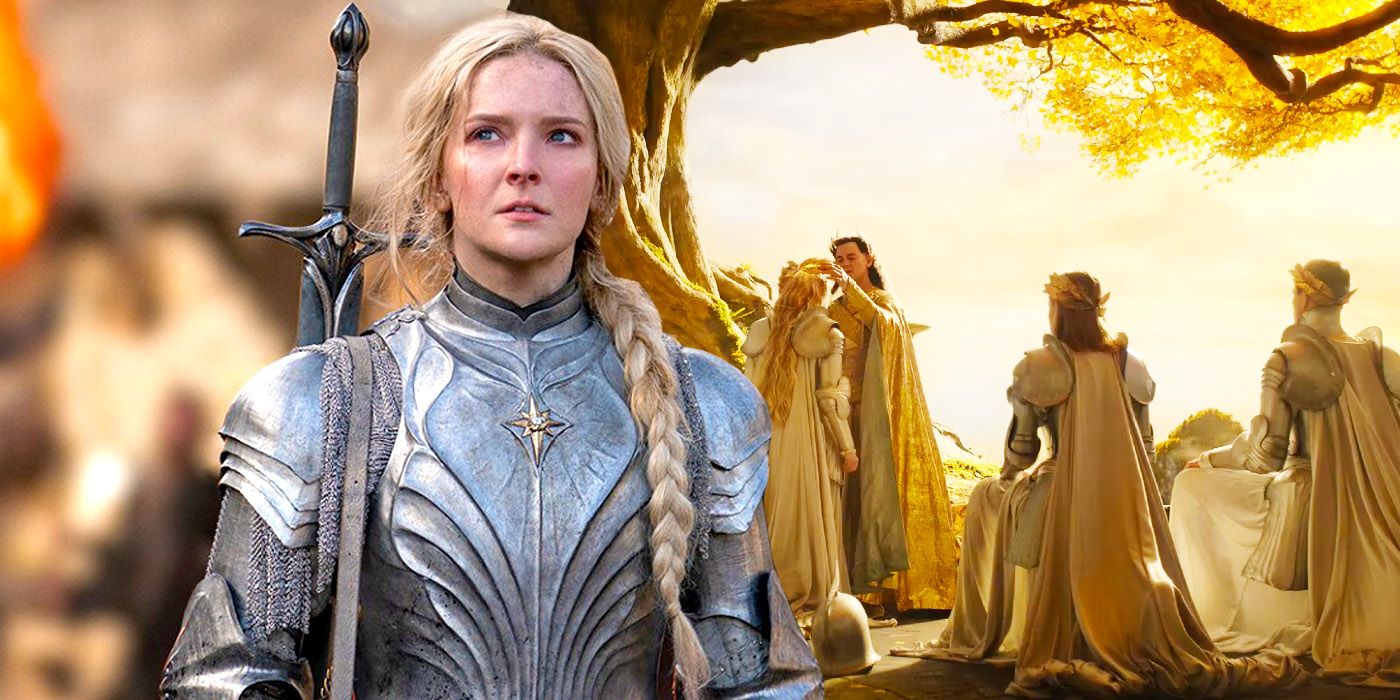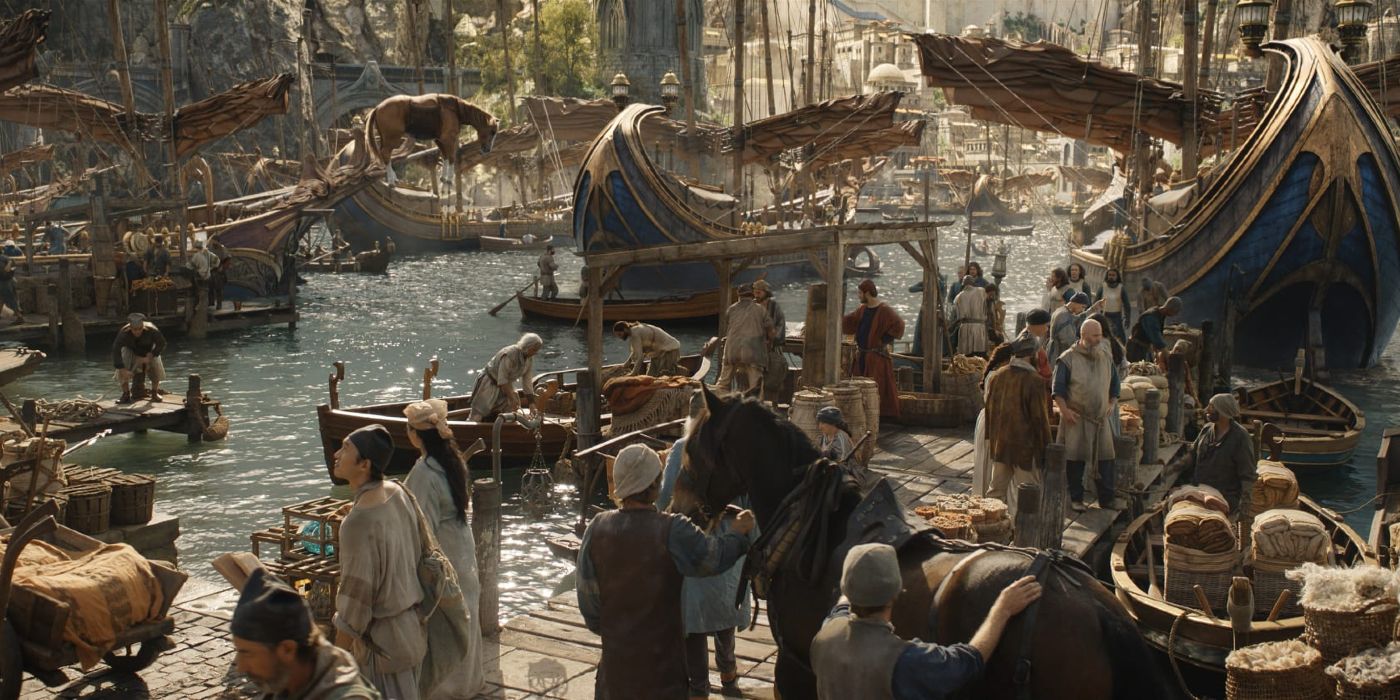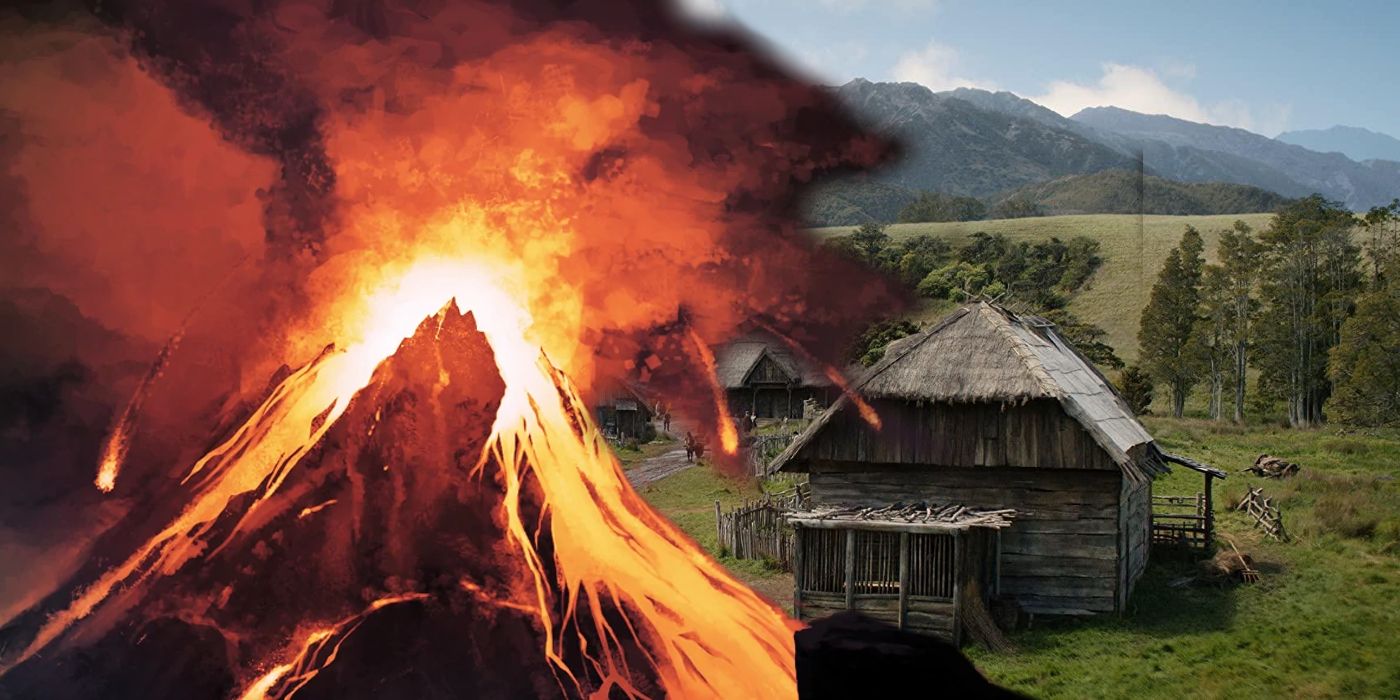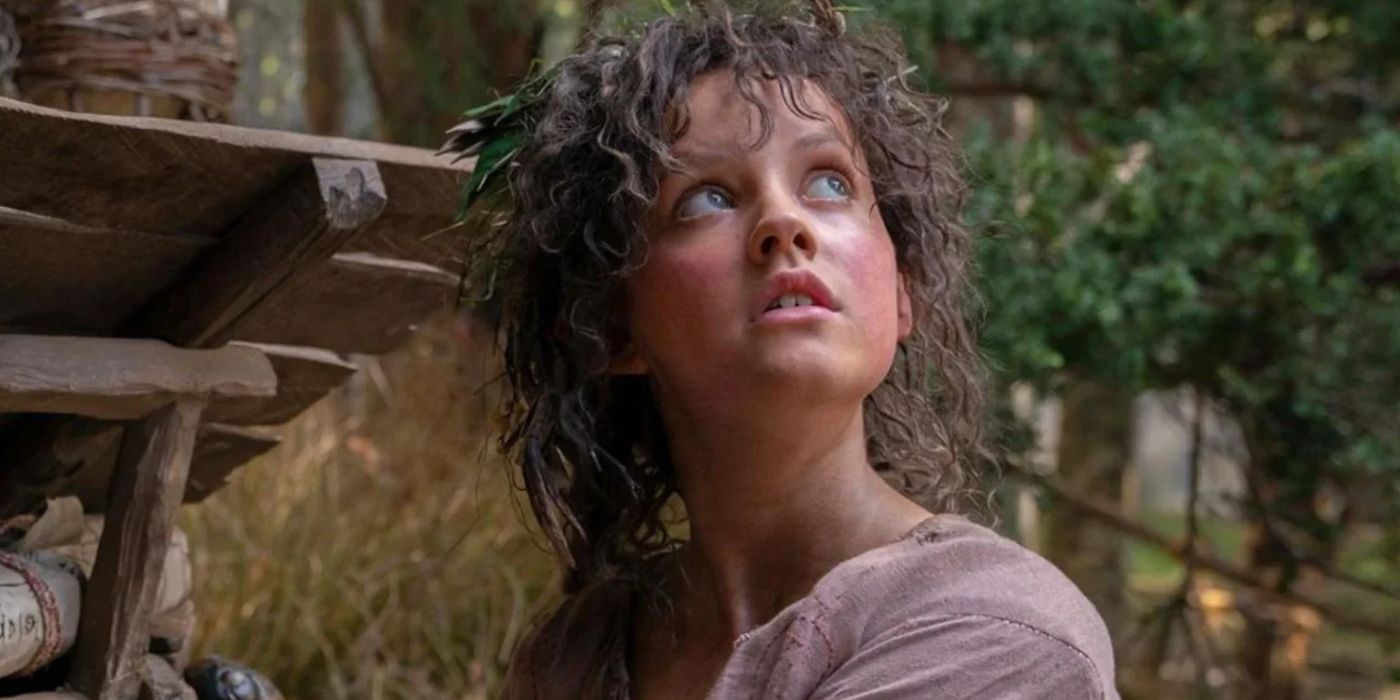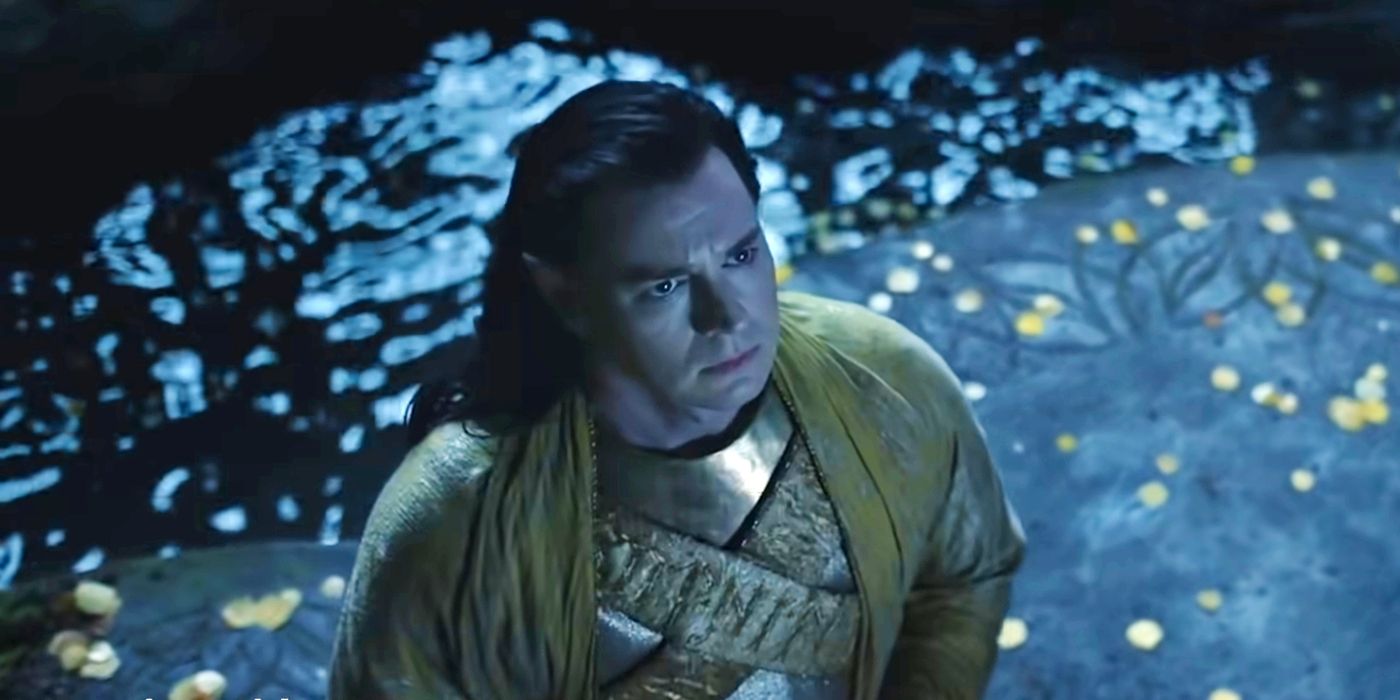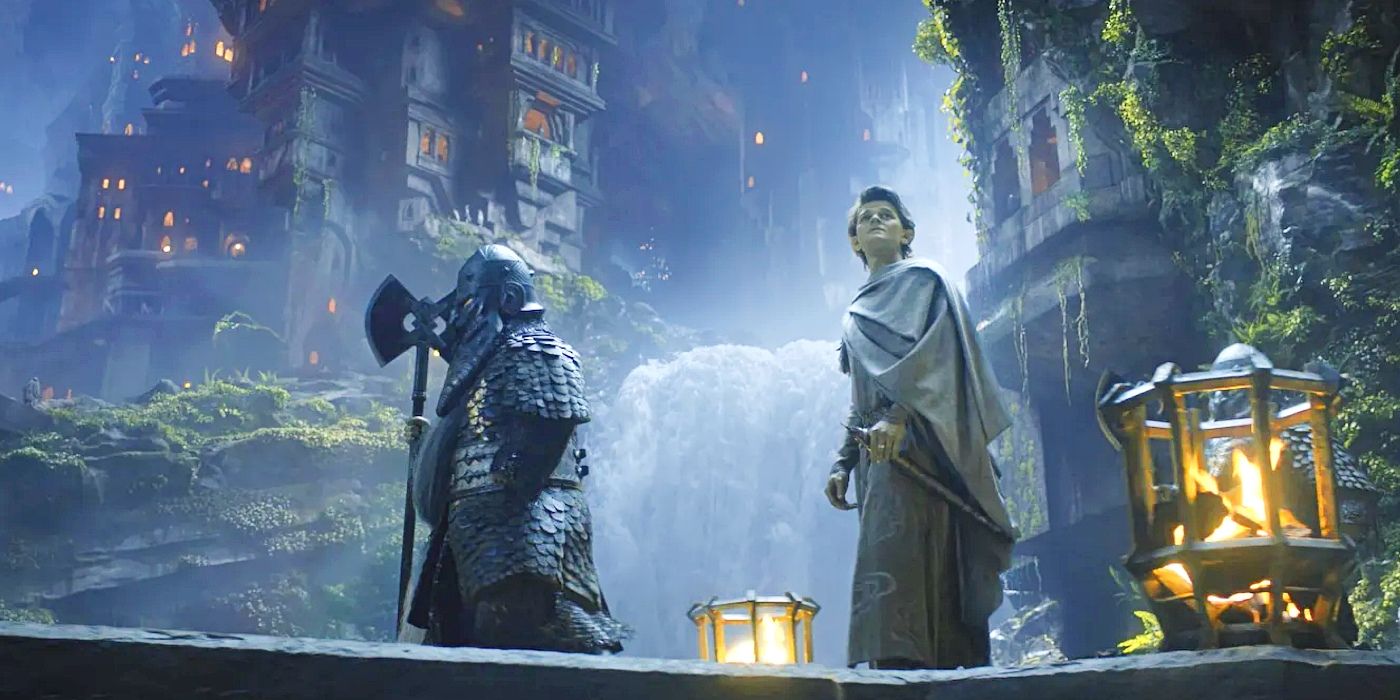This article contains spoilers for The Lord of the Rings: The Rings of Power episodes 1 & 2.The Middle-earth of The Lord of the Rings: The Rings of Power is very different to the one seen in Peter Jackson's Lord of the Rings films. J.R.R. Tolkien was one of the most expansive and creative writers of all time, and the world he fashioned is remarkably vast, with an incredibly complex mythology. The timeline of Eä (the universe in which Middle-earth exists) is divided into four ages, which span literal millennia. The Rings of Power is set in the Second Age, long before the days of Frodo, Aragorn, and the rest of the Fellowship of the Ring.
Curiously, in Tolkien's notes it is clear the world of the Second Age was yet to become a sphere. Tolkien envisaged the world coming into its familiar shape after the cataclysmic events at the end of the Second Age; he came to regret this decision, believing the idea of a "Flat World" impacted on the believability of his stories. Unfortunately, by this time the flat nature of the world was written into his stories and many hinged on the idea, making it very difficult indeed to adapt. He had barely begun to do so by the time of his death, meaning many stories of the Second Age would need significant revisions. The Rings of Power has made numerous changes to Tolkien's works, and the cosmology, in particular, has been modified — alterations J.R.R. Tolkien himself would likely approve of.
Still, that particular change will mean little to most viewers; they'll be unaware Tolkien ever imagined the Second Age to involve anything other than a sphere. Rather, their focus will be on the details that are evident on-screen. Here are all the major differences between the Middle-earth of The Lord of the Rings: The Rings of Power and The Lord of the Rings.
The Rings Of Power Features The Island Of Númenor
The first key difference lies in the importance of an island nation called Númenor. One of the greatest civilizations in the history of Middle-earth, the kingdom of Númenor was a majestic civilization settled by the Edain - Middle-earth's first recorded men, who allied with the Valar against Morgoth. As a reward for their loyalty, the Valar raised an island out of the waters for them to live on, and it was ruled by Tar-Minyatur - Elrond's brother, who forsook his elven half. This promises to be the most advanced city ever seen on Middle-earth; the Númenoreans were granted extended lifespans, and they were known for their physical strengths and pronounced wisdom.
The Fall of Númenor will mark the end of the Second Age, with the great city drowned by a great wave and its inhabitants killed - including Sauron's physical body. There will be faithful survivors, however, who establish new kingdoms in Middle-earth. The Númenoreans will mix with the humans living on Middle-earth, with their descendants becoming known as the Dúnedain, possessing many of their attributes. The Númenoreans will be responsible for establishing many of the familiar kingdoms of the Third Age, including Gondor in the south and Arnor in the north. Viewers should not expect any mention of Rohan in The Rings of Power, for that particular kingdom will not be founded until the 13th century of the Third Age. Aragorn, for his part, is the most famous of the Dúnedain; he will actually 87 at the time of the War of the Ring, proving he's inherited a long life.
The Southlands Were Yet To Become Mordor
The Rings of Power introduces viewers to new Tolkien locations such as the Southlands, confirmed by Amazon to be the given name for Mordor. According to the Elves, the Southlands were once barren but have now become fertile grasslands; it's likely this alludes to historic volcanism, with the volcanic ash weathering away to fix elements like magnesium and potassium into the soils. The Rings of Power episodes 1 and 2 already hint that the volcanoes of the Southlands are slumbering, not extinct, with accounts of crops mysteriously dying off - likely due to the release of volcanic gasses. It surely won't be long before eruptions begin, leading to the formation of Mount Doom itself.
The Proto-Hobbits (Harfoots) Flourish In Rhovanion
Meanwhile, a group of proto-Hobbits known as Harfoots flourishes in Rhovanion. According to Tolkien, the Harfoots were one of three branches of early Hobbits (the others are known as Stoors and Fallohides, and they possess slightly different physical attributes; the most well-known Stoor is Sméagol, who became Gollum). The Harfoots excel at hiding themselves away from the other races of Middle-earth, and live a migratory life. They are dwelling quite close to the region that will become known as the Mirkwood after Sauron chooses to settle there, leading to its becoming inhabited by various dark creatures. Tolkien's notes suggest the proto-Hobbits will flee Mirkwood and the shadow of Sauron's citadel, Dol Guldur, and in the Third Age they will finally settle in the Shire.
The Elven Kingdoms Of Middle-Earth
The Elves of The Rings of Power are ruled by High King Gil-Galad, whose throne is found at Lindon. It is portrayed as a place of great beauty, situated near the Grey Havens, where ships can be sent out to Valinor. Gil-Galad established Lindon during the First Age, and it is primarily inhabited by a branch of Elves called the Ñoldor, although by the Second Age it has become much more diverse. Lindon will still exist by the Third Age, although much diminished; the ships seen leaving Middle-earth for Valinor in The Return of the King leave from there.
Heading east, The Rings of Power introduces viewers to the Elven stronghold of Eregion. Tolkien wrote several different accounts of Eregion's origin in his unpublished notes, and it's already clear The Rings of Power is taking a new approach that blends elements of them all. Eregion is destined for tragedy, with Celebrimbor forging the Rings of Power at his forge there. Eregion will not exist in the Third Age, for it is fated to be destroyed by a wrathful Sauron.
The Dwarves Flourish At Khazad-dûm
The Second Age is noted for the Dwarven kingdom of Khazad-dûm, most famous of all Dwarven kingdoms and situated near Eregion beneath the Misty Mountains. It was founded in the First Age, but grew in importance during the Second Age, pursuing good relations with the nearby Elves. As with so many locations in The Rings of Power, this beautiful city has a tragic destiny. Into the Third Age, miners will dig too deeply and unearth a fearsome Balrog. By the time of The Lord of the Rings, Khazad-dûm will have been abandoned for five centuries, and its mines named Moria - "the Black Pit." It is even possible the contents of Durin's box are mithril, the silver inlay used to create the fabled Doors of Durin, adding even more depth to Khazad-dûm's "speak, friend, and enter" riddle. The Rings of Power really is deepening viewers' experiences of Middle-earth.

